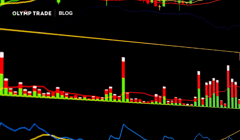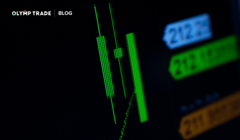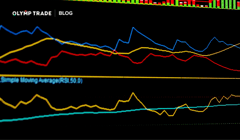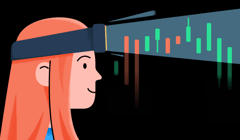
Among the many technical indicators, Average True Range is one of the most popular ones. It is designed to measure price volatility of a trading instrument. Used in combination with other technical indicators, it can become a very effective tool of precise price analysis.
Contents:
- Assessing the Trend Strength with Graphical Analysis
- Assessing the Trend Strength with Mathematical Methods
- Trading with the Average True Range
- Selecting a Trading Approach with Average True Range
- Many Indicators to Choose From
Interact with the underlined words and green dots to get additional details and explanations.
Additional context for the visuals.
Explanations and definitions of terms.
Assessing the Trend Strength with Graphical Analysis
With a trend trading approach, the stronger the trend, the more chances to earn, and a greater size of trades may offer greater profit opportunities.
With a counter-trend strategy, traders need to know when the trend may start weakening so that they can open a trade in the opposite direction.
In both scenarios, traders need to assess the strength of the current trend. The easiest way to do that is to draw a trend line and assess the angle it makes with the horizontal axis.
The greater the angle, or the steeper the slope, the stronger the trend.

Trendline 1
Trendline 2
On the above chart, the slope angle of purple Trendline 2 is greater than that of red Trendline 1. That means, purple Trendline 1 is stronger than red Trendline 2. Intuition suggests the same.
Assessing the Trend Strength with Mathematical Methods
An alternative way to assess the strength of a trend is to look at the three indicators of volume, open interest, and volatility.
Trading volume is how much money is currently in a particular asset or how many times the price has changed or ticked. The latter is called tick volume.
Open Interest is a complex indicator that changes as new trades appear. If open interest increases as prices rise, it means that more and more traders are opening Up trades.
In a strong trend, a rise or fall in price is often accompanied by an increase in volume and open interest.
Decline in trading volume and open interest indicates a slowdown and a trend change.

Value growth
Open interest growth
Usually, the volume growth is accompanied by an increase in trading volatility, Average True Range is one of the most significant volatility indicators.
Trading with the Average True Range
The ATR indicator was developed by Welles Wilder, the creator of the RSI indicator. True Range is key to ATR’s calculation.
The concept of the indicator is this: when volatility rises, ATR does so too. When volatility decreases, ATR drops.
If the trend is strong, the indicator Average True Range will grow, confirming the strength of the trend.
When the trend is weakening, the ATR drops.
Therefore, the Average True Range indicator does not give exact signals for opening Up or Down trades. That’s why there is no specific Average True Range strategy. However, the ATR technical indicator is very useful in confirming the strength of the current trend.

On the chart above, the first observed trend is a downtrend. In the course of that downward movement, ATR was moving sideways. For a trader, that would mean that trend wasn’t strong enough to follow. After the downslide, the price started actively moving Up, and the ATR started growing, confirming the strength of the uptrend. Finally, the third trend was a downtrend, but the ATR was still growing, suggesting that the downtrend could be strong as well.
Selecting a Trading Approach with Average True Range
ATR can also be used to understand trading dynamics and select a trend or a counter-trend trading approach based on that.
Growth of the ATR indicates a strengthening of the trend. Therefore, in this case, it is best to join the trend and use trend indicators.
When the ATR decreases, the trend usually slows down. In this case, it is best to use counter-trend strategies and oscillators.
Many Indicators to Choose From
The Olymp Trade platform offers many technical tools and indicators that can help improve your trading similar to the ATR and regardless of your level of experience. Check them out and boost your trade results!
Trade with Olymp TradeRisk warning: The contents of this article do not constitute investment advice, and you bear sole responsibility for your trading activity and/or trading results.
Tick volume is the number of changes in price regardless of volume that occurs during any given time interval.
Volatility is a metric that measures the magnitude of the change in prices in a security.
The relative strength index, or RSI, is a momentum indicator used in technical analysis to measure the magnitude of recent price changes. It evaluates overbought or oversold conditions in the price of a stock or other asset.
Oscillators are chart indicators that help determine overbought or oversold conditions in ranging or non-trending markets.
Oscillators are chart indicators that help determine overbought or oversold conditions in ranging or non-trending markets.











